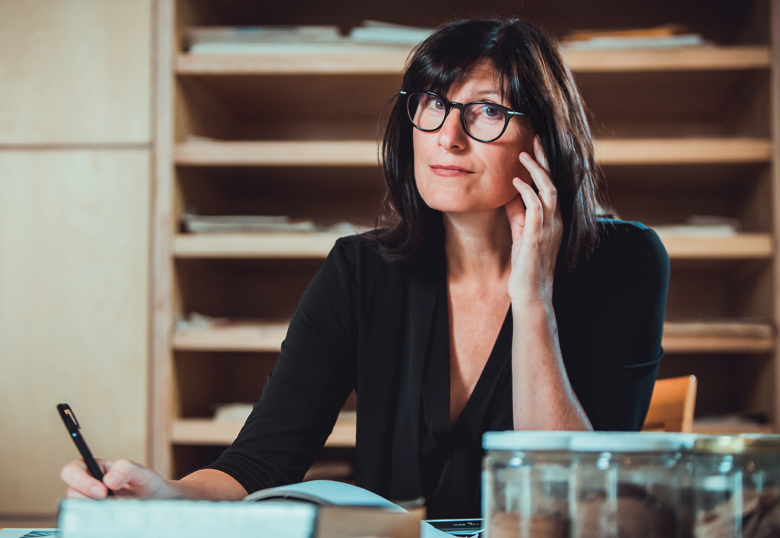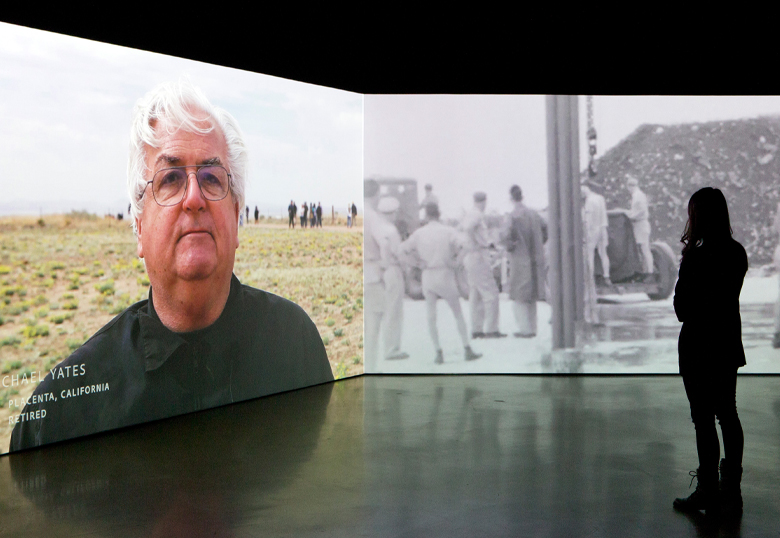Aligning with the 75th Anniversary of the birth of the atomic age, University of Lethbridge professor Mary Kavanagh explores the bomb and its legacies in a series of art exhibitions presented across Canada and the US: the multi-faceted Daughters of Uranium and Trinity 3, a two-channel video work extracted from the larger project. The exhibitions reach across the nuclear Anthropocene to build connections between nuclear technologies and their lived effects, the nuclear site and irradiated bodies, nuclear fallout, waste, and material evidence.

Trinity Site in New Mexico anchors the exhibitions. Conducted under the auspices of the Manhattan Project, the Trinity test took place on July 16, 1945 deep in the desert. The purpose of the test was to explode an atomic device to prove the viability of the bombs that were used in attacks on Hiroshima and Nagasaki three weeks later. Situated on an active military range, today the Trinity Site is open to the public during bi-annual open houses that attract thousands of visitors each year.
“I was not prepared for the thousands of people that came through on this one day,” says Kavanagh about her first visit in 2012. “So that piqued my interest, raised the questions: who are all these people and why do they come? Which then became the essential questions in my applications for funding.”

In addition to receiving grants from the Canada Council for the Arts and the Alberta Foundation for the Arts, in 2017 Kavanagh was awarded an Insight Research/Creation Grant from the Social Science and Humanities Research Council of Canada (SSHRC). Her project Atomic Tourist: Trinity received nearly $150,000 over four years to support fieldwork, mentor graduate students, and access the equipment and infrastructure needed to conduct the research. She has returned each year since to interview visitors about their personal connection to the Bomb, amassing a living archive of beliefs and viewpoints about this shared history.
The first scholar at the University of Lethbridge to receive a SSHRC Insight Research/Creation grant, Kavanagh’s research straddles the academic and art worlds.
“Interpreting historical, political and cultural dimensions of the nuclear age is a challenge for any artist,” shares Kavanagh. “It’s important not to lose sight of an essential, visceral experience and expression while addressing complex issues in material form.”
Kavanagh’s exhibitions include multi-screen video projections, photography, drawing, artifacts, and a provocative series of sculptures using light, glass, and lead.
Originating at the Southern Alberta Art Gallery in Lethbridge and travelling to the Founders’ Gallery, The Military Museums, Calgary, and the Kitchener-Waterloo Art Gallery, Daughters of Uranium has an accompanying exhibition catalogue with essays by Peter C. van Wyck, cultural theorist, Concordia University, Montreal; Jayne Wilkinson, Editor-in-Chief, Canadian Art, Toronto; as well as curatorial essays by Christina Cuthbertson and Lindsey Sharman. The publication is scheduled for launch in mid-October 2020 and will be available for purchase through the partner galleries . Kavanagh’s works are currently on display in a large online group exhibition Trinity: Reflections on the Bomb at the Albuquerque Museum in New Mexico. A portfolio of her work is included in an anthology edited by John O’Brian and Claudette Lauzon, Through Post-Atomic Eyes, published by McGill-Queens University Press, due for released September 2020.
Anniversaries provide opportunities to recall or critique, and on the 75th anniversary of the Trinity atomic bomb test, which unleashed new orders of destructive capability, Kavanagh has created the conditions for discussion and reflection, not just of the past, but of the continuing impact into the future. Recently awarded a Board of Governors Research Chair, Tier I in Fine Arts (2020-2025), Kavanagh looks forward to continuing this ambitious research program while instructing and mentoring the next generation of artists and scholars.
